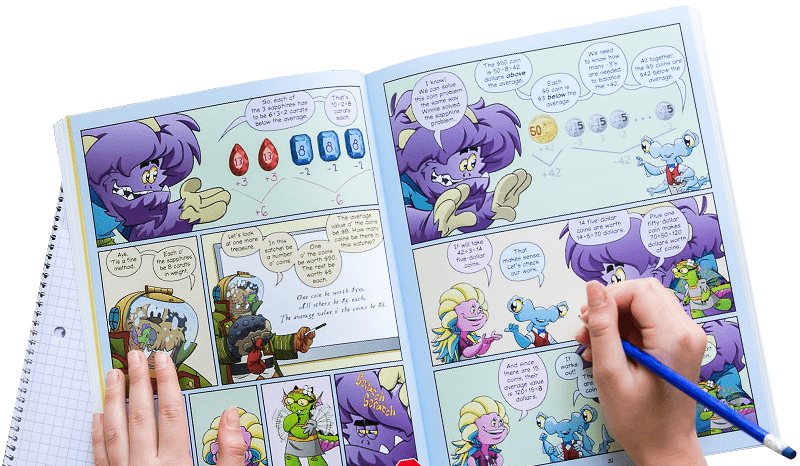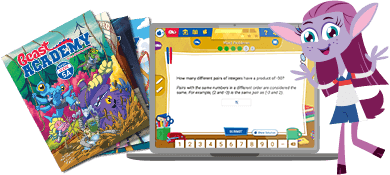X-Ray Dice
Use addition and subtraction to magically predict the number on the bottom of a die.
Instructions
Teach this trick to your young magician. (And then magically forget the trick so you can be impressed every time they perform it for you!) First, some background information: opposite faces of a standard 6-sided die always add to 7. So if you roll a 4, the opposite side must be a 3, because 4 + 3 = 7. Or if you roll a 1, the opposite side must be a 6, because 1 + 6 = 7. You get the idea.
To perform the trick, the magician should: Ask an audience member (grandparents are excellent for this) to roll a die, then magically announce what number is on the bottom of the die.
For younger math beasts, figuring out the number will take some practice. See Learning Notes below for some ideas on how to help them think about this math.
Help your child come up with some good banter for their performance! Maybe something like, "Did you know my glasses are actually equipped with X-ray vision?" or "When I touch my nose, I can actually see through this die!"
Don't forget: it's Beast Academy Playground, not Beast Academy Study Hall. Change the rules, be silly, make mistakes, and try again. The Variations and Learning Notes are here for you if you want to dive deeper, but not all of them apply to learners of every age. The most important thing is to have fun.
What do you think of this activity?
We're always looking to improve. Submit your feedback to us below.
- a standard 6-sided die
- addition
- subtraction
- K.OA.A.5
- 1.OA.B.4

Ready to level up?
Keep problem solving with Beast Academy’s full math curriculum for students ages 6–13. Check out our captivating comic book series and immersive online platform.
LEARN MOREBring problem-solving to your classroom
Keep your entire class engaged with a full book and online math curriculum, for students ages 6–13. 98% of teachers say they’re satisfied with Beast Academy.
LEARN MORE



Ready to level up?
Keep problem solving with Beast Academy’s full math curriculum for students ages 6–13. Check out our captivating comic book series and immersive online platform.
LEARN MOREBring problem-solving to your classroom
Keep your entire class engaged with a full book and online math curriculum, for students ages 6–13. 98% of teachers say they’re satisfied with Beast Academy.
LEARN MORE
Sign up to be notified when new videos are released.















































